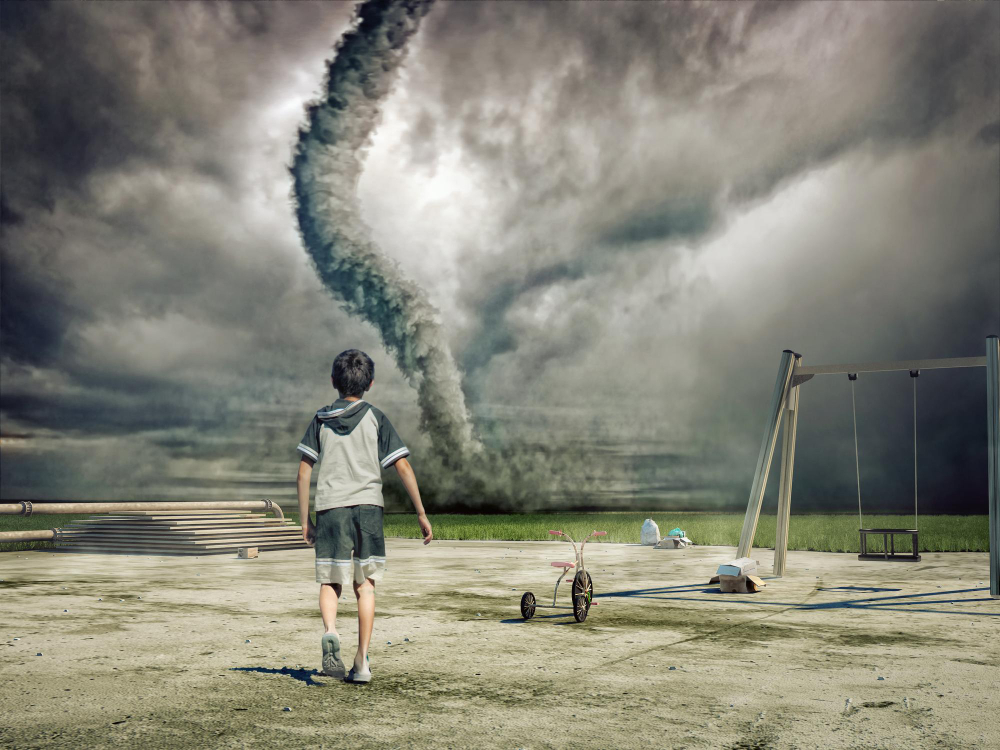#1: Assess the Situation
If you find yourself outdoors during a tornado, quickly assess the situation. Look for any signs of a tornado, such as a dark, rotating cloud or debris flying in the air. Take immediate action to protect yourself.
#2: Find a Sturdy Shelter if Nearby
If there is a sturdy building nearby, seek shelter immediately. Look for a reinforced structure, such as a basement, storm cellar, or a small interior room without windows, where you can take cover from the tornado.
#3: Take Cover in a Low-Lying Area
If you cannot reach a building in time, find a low-lying area such as a ditch, culvert, or a depression in the ground. Lie flat on your stomach, cover your head and neck with your arms, and shield yourself from flying debris.
#4: Stay Away from Vehicles, Trees, and Power Lines
Avoid seeking shelter under vehicles, as they can be easily lifted by tornado winds. Stay away from trees, power lines, or any tall objects that may topple or become projectiles during the tornado. Find the lowest spot possible for safety.
#5: Protect Your Head and Neck
Cover your head and neck with your arms to shield yourself from flying debris. Use your hands to protect your head and seek additional protection if possible, such as covering yourself with a jacket, backpack, or any other available items.
#6: Remain Calm and Stay Low
Stay calm and remain as low as possible to reduce your exposure to the tornado’s strong winds. Keep a low center of gravity by lying flat and holding on to the ground to avoid being swept away by the wind.
#7: Monitor the Tornado’s Movement
Continuously monitor the tornado’s movement from a safe position. Be aware of any changes in direction or intensity. Stay alert and be ready to adjust your location if necessary, but only if it can be done safely.
#8: Wait for the Tornado to Pass
Once the tornado has passed, wait for a safe amount of time before emerging from your shelter or low-lying area. Assess the surroundings for any potential hazards or downed power lines before moving to a safer location.
#9: Check for Injuries
After the tornado has passed, check yourself and others for any injuries. Provide first aid if needed or seek medical assistance as soon as possible. Be mindful of potential hazards and be cautious while moving around the affected area.
#10: Seek Shelter and Assistance
If the area is still dangerous or if you need assistance, seek shelter in a nearby building or reach out to emergency services for help. Follow their instructions and cooperate with authorities to ensure your safety and well-being.
#11: Take Care of Emotional Well-being
Experiencing a tornado can be traumatic. Reach out to friends, family, or support organizations for emotional support and guidance. Take care of your emotional well-being during the recovery process.
#12: Learn from the Experience
Take the opportunity to learn from the experience. Reflect on how you responded during the tornado and identify ways to improve your preparedness for future emergencies. Consider taking a first aid or emergency preparedness course to enhance your knowledge and skills.
By following these numbered steps, you can increase your chances of staying safe during a tornado when you’re caught outside. Remember, your safety should always be the top priority. Stay aware, stay calm, and take immediate action to protect yourself during this severe weather event.
